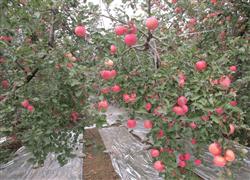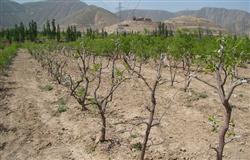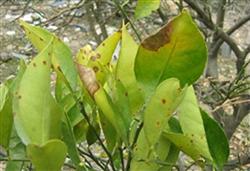When will the apple trees be fertilized?

When will the apple trees be fertilized? There are no netizens to help introduce that apple tree fertilization is generally divided into two types: accumulated fertilizer and topdressing, and the specific fertilization time should also be determined according to the apple variety, the law of fertilizer demand of fruit trees, and the growth and fruit status of the trees. The planting network has sorted out the fertilization periods and methods of apple trees, which are listed in detail below for netizens' reference. Early fertilization time of apple trees: pre-flowering fertilizer or sprouting fertilizer (carried out in early April) and post-anthesis fertilizer (in mid-May). These two fertilizers in the early stage can effectively promote the sprouting and flowering of fruit trees and timely prevent de-fertilization due to the consumption of a large amount of nutrients by flowering, increase the fruit setting rate and promote the growth of new branches. Fertilization time in the middle and later stage of apple trees: flower bud differentiation and young fruit expansion fertilizer were applied to apple trees (from the end of May to the first ten days of June). This topdressing is to meet the needs of apple fruit expansion, branch and leaf growth and flower bud differentiation. Apple tree topdressing is generally dominated by potash fertilizer. The best period of applying fertilizer for apple trees is in autumn (in the first and middle of September). The fertilizer of apple trees is mainly farm manure, and the total amount of phosphate fertilizer is applied according to the total amount of phosphate fertilizer in the whole year. In order to give full play to the fertilizer effect, phosphate fertilizer should first be accumulated and ripened with organic fertilizer, and then mixed and applied well. The main function of applying accumulated fertilizer to apple trees is to ensure the photosynthesis of fruit trees from harvest to defoliation, improve nutrition accumulation, and lay a good foundation for the growth and development of fruit trees next year. On the basis of these four times of fertilization, we should also consider the combination of foliar fertilizer spraying + melon and fruit Zhuangtieling. 0.3% 0.5% urea solution + melon and fruit Zhuangtiling was sprayed before July, and 0.3% potassium dihydrogen phosphate or fruit micro-fertilizer + melon and fruit Zhuangtiling was sprayed after July. Fertilization methods for apple trees: fertilization method 1, root fertilization: the capillary root of the fruit tree is the main organ of absorbing nutrients, and the absorption of fertilizer by the fruit tree mainly depends on the root hairs in the root system. therefore, fertilization in the centralized distribution area of root system is one of the keys to improve fertilizer efficiency. Fertilization method 2. Fertilization on the ground and underground: in general, the distribution range of horizontal roots of apple trees is about 1-2 times of the crown diameter, but most of them are concentrated on the outer edge or a little distance of the crown projection. Its vertical distribution varies with tree species, soil quality and management level. Generally speaking, the root distribution of apple, pear, walnut, chestnut and grape is relatively deep, up to 70-80 cm, but more than 80% of the root system is concentrated in the soil layer of about 60 cm, while the root distribution of peach, apricot, plum and cherry is shallower. Most of them are in the soil layer of about 40 cm. Therefore, when applying fertilizer, we should apply fertilizer according to this characteristic. If the root distribution is deep, the organic fertilizer should be decomposed more slowly, the fertilizer supply period should be longer, the chemical fertilizer should be applied deeply, and the chemical fertilizer can be applied shallowly. For example, the application depth of organic fertilizer is 40-60 cm for deep-rooted fruit trees such as apples, and 30-40 cm for shallow-rooted fruit trees such as peaches. At the same time, fertilization should be based on the edge of the crown projection and slightly farther away, so as to maximize the fertilizer effect. Third, foliar fertilizer spraying: foliar spraying should be carried out according to the growth of fruit trees. if the tree grows weak, the branches and leaves grow slowly, and the leaves tend to yellow or light yellow, which indicates that fruit trees lack oxygen and iron, they should mainly spray nitrogen fertilizer. and properly spray some iron citrate, phosphate and potassium fertilizer. If the leaves are big and green, the branches are too long, and the nitrogen fertilizer is sufficient, we should mainly spray phosphate fertilizer and potash fertilizer and spray some trace elements appropriately. Foliar fertilizer spraying of fruit trees should be paid attention to: first, it should be carried out after 5: 00 p. M. on cloudy days or sunny days in the early flowering, flowering and strong fruit stages of fruit trees. The interval was 10 to 15 days. Attention to foliar spraying of fruit trees 2. Carbamines in nitrogen fertilizer and phosphate rock powder in phosphate fertilizer are ineffective or harmful to foliar spraying and should be strictly prohibited. Suitable varieties are urea, calcium superphosphate, potassium dihydrogen phosphate, potassium sulfate, plant ash and trace elements of borax, zinc sulfate, manganese sulfate, ferric sulfate. Iron citrate, etc. Foliar fertilizer spraying of fruit trees is not the main way of fertilization, but only an auxiliary fertilization method in the case of insufficient soil fertilization. Attention to foliar spraying of fruit trees 4. The best concentration of urea, superphosphate, potassium dihydrogen phosphate, ternary compound fertilizer and plant ash are 0.3%, 0.5%, 0.5%, 0.2%, 0.4% and 0.5%, respectively. The concentration of borax, zinc sulfate, ferric citrate and magnesium sulfate in trace elements is 0.08%-0.15%. Attention to foliar fertilizer spraying of fruit trees. 5. The stomata on the back of the leaves are many and large, and the fertilizer is easy to be absorbed, so spraying should be mainly on the back of the leaves from top to bottom. In this way, the fat will naturally fall under the leaves. Click to get more apple tree planting techniques click to get more fruit planting techniques
- Prev

How are jujube trees grafted?
How are jujube trees grafted? What good grafting techniques do jujube trees have? There are many grafting methods for jujube trees, such as split grafting, ventral grafting, peeling grafting, cutting grafting and tender shoot grafting. The planting network has sorted out the grafting method of embedded buds of jujube, the following detailed steps are listed to provide the net.
- Next

How do citrus seedlings control anthrax?
What is the harm of citrus anthracnose? How do citrus seedlings control anthrax? Hope experienced netizens help introduce planting net collated citrus seedling anthracnose harm and prevention methods, listed below for netizens reference. Citrus seedlings anthracnose harm: anthracnose is a common disease in citrus cultivation...
Related
- Moge, come on! The staff of the peasant association in the producing area of cantaloupe were frightened when the crowd gathered.
- Causes and Solutions of low Fruit setting rate of Apple
- Symptoms and control measures of passion fruit virus disease
- Fruit growing lesson: how do apple orchards keep high yields?
- Can you build orchards in the mountains? What are the pros and cons?
- How to manage the coloring period of Crisson grape?
- This paper introduces the processing technology of two kinds of fig products.
- How much is a month for retired teachers in rural areas by 2020?
- How can strawberry planting increase sugar content? We should pay attention to management in many aspects.
- What are the cultivation techniques on how to improve the yield of golden fruit?

